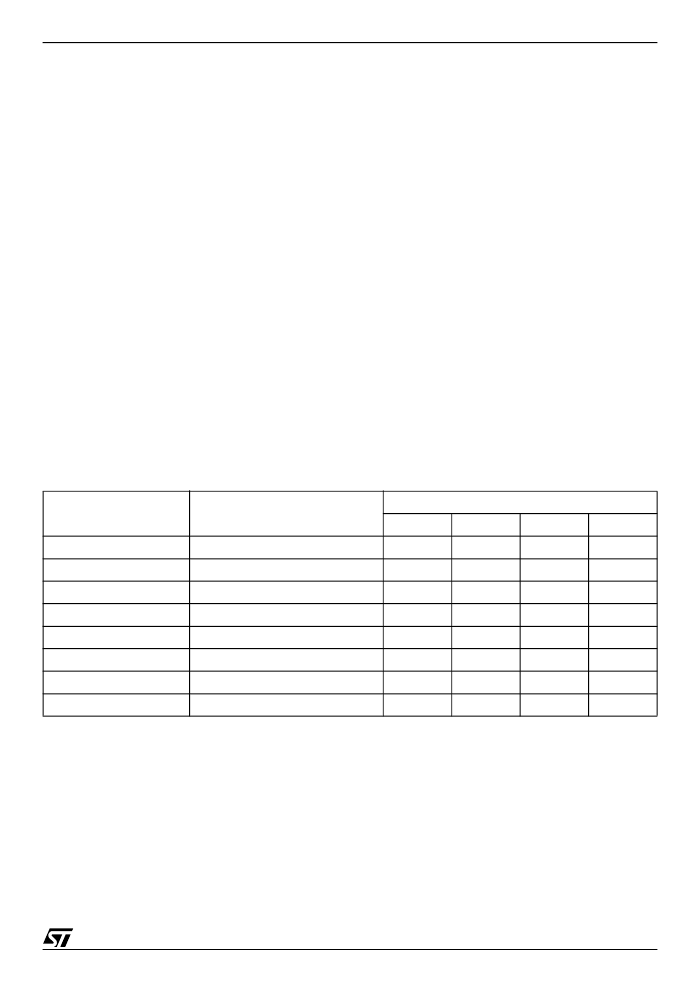- 您現(xiàn)在的位置:買賣IC網(wǎng) > PDF目錄361591 > uPSD3253AV-24T1T (意法半導(dǎo)體) Flash Programmable System Devices with 8032 Microcontroller Core PDF資料下載
參數(shù)資料
| 型號(hào): | uPSD3253AV-24T1T |
| 廠商: | 意法半導(dǎo)體 |
| 英文描述: | Flash Programmable System Devices with 8032 Microcontroller Core |
| 中文描述: | 閃存可編程系統(tǒng)設(shè)備與8032微控制器內(nèi)核 |
| 文件頁數(shù): | 25/175頁 |
| 文件大?。?/td> | 1731K |
| 代理商: | UPSD3253AV-24T1T |
第1頁第2頁第3頁第4頁第5頁第6頁第7頁第8頁第9頁第10頁第11頁第12頁第13頁第14頁第15頁第16頁第17頁第18頁第19頁第20頁第21頁第22頁第23頁第24頁當(dāng)前第25頁第26頁第27頁第28頁第29頁第30頁第31頁第32頁第33頁第34頁第35頁第36頁第37頁第38頁第39頁第40頁第41頁第42頁第43頁第44頁第45頁第46頁第47頁第48頁第49頁第50頁第51頁第52頁第53頁第54頁第55頁第56頁第57頁第58頁第59頁第60頁第61頁第62頁第63頁第64頁第65頁第66頁第67頁第68頁第69頁第70頁第71頁第72頁第73頁第74頁第75頁第76頁第77頁第78頁第79頁第80頁第81頁第82頁第83頁第84頁第85頁第86頁第87頁第88頁第89頁第90頁第91頁第92頁第93頁第94頁第95頁第96頁第97頁第98頁第99頁第100頁第101頁第102頁第103頁第104頁第105頁第106頁第107頁第108頁第109頁第110頁第111頁第112頁第113頁第114頁第115頁第116頁第117頁第118頁第119頁第120頁第121頁第122頁第123頁第124頁第125頁第126頁第127頁第128頁第129頁第130頁第131頁第132頁第133頁第134頁第135頁第136頁第137頁第138頁第139頁第140頁第141頁第142頁第143頁第144頁第145頁第146頁第147頁第148頁第149頁第150頁第151頁第152頁第153頁第154頁第155頁第156頁第157頁第158頁第159頁第160頁第161頁第162頁第163頁第164頁第165頁第166頁第167頁第168頁第169頁第170頁第171頁第172頁第173頁第174頁第175頁

25/175
UPSD3254A, UPSD3254BV, UPSD3253B, UPSD3253BV
Data Transfers
Internal RAM.
Table 6 shows the menu of in-
structions that are available for moving data
around within the internal memory spaces, and the
addressing modes that can be used with each
one. The MOV <dest>, <src> instruction allows
data to be transferred between any two internal
RAM or SFR locations without going through the
Accumulator. Remember, the Upper 128 bytes of
data RAM can be accessed only by indirect ad-
dressing, and SFR space only by direct address-
ing.
Note:
In uPSD325X devices, the stack resides in
on-chip RAM, and grows upwards. The PUSH in-
struction first increments the Stack Pointer (SP),
then copies the byte into the stack. PUSH and
POP use only direct addressing to identify the byte
being saved or restored, but the stack itself is ac-
cessed by indirect addressing using the SP regis-
ter. This means the stack can go into the Upper
128 bytes of RAM, if they are implemented, but not
into SFR space.
The Data Transfer instructions include a 16-bit
MOV that can be used to initialize the Data Pointer
(DPTR) for look-up tables in Program Memory.
The XCH A, <byte> instruction causes the Accu-
mulator and ad-dressed byte to exchange data.
The XCHD A, @Ri instruction is similar, but only
the low nibbles are involved in the exchange. To
see how XCH and XCHD can be used to facilitate
data manipulations, consider first the problem of
shifting and 8-digit BCD number two digits to the
right. Table 8 shows how this can be done using
XCH instructions. To aid in understanding how the
code works, the contents of the registers that are
holding the BCD number and the content of the
Accumulator are shown alongside each instruction
to indicate their status after the instruction has
been executed.
After the routine has been executed, the Accumu-
lator contains the two digits that were shifted out
on the right. Doing the routine with direct MOVs
uses 14 code bytes. The same operation with
XCHs uses only 9 bytes and executes almost
twice as fast. To right-shift by an odd number of
digits, a one-digit must be executed. Table 9
shows a sample of code that will right-shift a BCD
number one digit, using the XCHD instruction.
Again, the contents of the registers holding the
number and of the accumulator are shown along-
side each instruction.
Table 6. Data Transfer Instructions that Access Internal Data Memory Space
Mnemonic
Operation
Addressing Modes
Dir.
Ind.
Reg.
Imm
MOV A,<src>
A = <src>
X
X
X
X
MOV <dest>,A
<dest> = A
X
X
X
MOV <dest>,<src>
<dest> = <src>
X
X
X
X
MOV DPTR,#data16
DPTR = 16-bit immediate constant
X
PUSH <src>
INC SP; MOV “@SP”,<src>
X
POP <dest>
MOV <dest>,”@SP”; DEC SP
X
XCH A,<byte>
Exchange contents of A and <byte>
X
X
X
XCHD A,@Ri
Exchange low nibbles of A and @Ri
X
相關(guān)PDF資料 |
PDF描述 |
|---|---|
| UPSD3253B | Two and Three Channel Codewheels |
| UPSD3253BV | Flash Programmable System Devices with 8032 Microcontroller Core |
| uPSD3254B-24T1T | Flash Programmable System Devices with 8032 Microcontroller Core |
| uPSD3254B-40T6T | Flash Programmable System Devices with 8032 Microcontroller Core |
| uPSD3254B-40U1T | Flash Programmable System Devices with 8032 Microcontroller Core |
相關(guān)代理商/技術(shù)參數(shù) |
參數(shù)描述 |
|---|---|
| UPSD3253AV-24T6 | 制造商:STMICROELECTRONICS 制造商全稱:STMicroelectronics 功能描述:Flash Programmable System Device with 8032 Microcontroller Core |
| UPSD3253AV-24T6T | 制造商:STMICROELECTRONICS 制造商全稱:STMicroelectronics 功能描述:Flash Programmable System Device with 8032 Microcontroller Core |
| UPSD3253AV-24U1 | 制造商:STMICROELECTRONICS 制造商全稱:STMicroelectronics 功能描述:Flash Programmable System Device with 8032 Microcontroller Core |
| UPSD3253AV-24U1T | 制造商:STMICROELECTRONICS 制造商全稱:STMicroelectronics 功能描述:Flash Programmable System Devices with 8032 Microcontroller Core |
| UPSD3253AV-24U6 | 制造商:STMICROELECTRONICS 制造商全稱:STMicroelectronics 功能描述:Flash Programmable System Device with 8032 Microcontroller Core |
發(fā)布緊急采購,3分鐘左右您將得到回復(fù)。